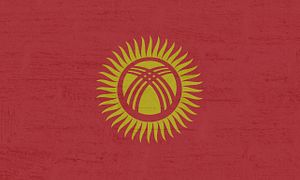A feminist art exhibition in Bishkek was meant to give space to discuss women’s economic freedom in Kyrgyzstan. Instead, the event became another episode in Kyrgyzstan’s culture wars.
The exhibition, called Feminnale in homage to biennales, brought 56 artists from more than 20 countries to Bishkek for a 17-day showcase of art and lectures. The timing was significant; the 17 days of Feminnale represented the number of women who died in a factory fire in Moscow in 2016, all of whom were labor migrants from Kyrgyzstan. Three years ago, the tragedy sparked a brief national reckoning with the socioeconomic forces that pushes women to work abroad in often dangerous conditions. The factory fire and the larger questions about labor and development passed, as is often the case in today’s media landscape, where scandals break faster than can be processed and digested. Feminnale was meant to revive this discussion and push it further; the exhibition’s organizers centered women’s economic power (or lack thereof) as the exhibit’s unifying concept.
Unfortunately, this framing got derailed when several men crashed the exhibit hall and demanded the government shut down the event; they claimed the art hanging on the walls was too provocative. Kyrgyzstan’s Minister of Culture Azamat Jamankulov agreed and ordered six pieces of art to be taken down from the Museum of Fine Arts, brazenly stating, “You can call this censorship.”
Local and international media caught wind of the censorship, and Feminnale became something of a scandal. An intense sequence of events unfolded in a matter of days: Mira Dzhangaracheva, the director of the Fine Arts Museum, resigned after receiving death threats. Feminnale artists signed an open letter to President Sooronbay Jeenbekov that sharply criticized the Minister of Culture. Jamankulov dug himself into a deeper hole by showing up at a rally where banners proclaimed “It’s shameful, don’t undress” and “The nation is above rights.” Parliamentarian Makhabat Mavlianova, who attracted press attention earlier this year for claims that Western-style wedding dresses are too immodest for Kyrgyz brides, jumped in to lambast the danger of foreign cultural influences.
Despite criticism from the New York Times and Human Rights Watch, the Ministry of Culture refused to budge on its censorship. Posters reading “CENSORED” hung in place of the pieces that had been removed; QR codes linked to instructions on where to see the artwork, which had been hung in a nearby coworking space until Feminnale’s last day.
One way to read the discussion surrounding Feminnale is that the government’s behavior legitimated conservative logic and nationalist thugs. However, conservatives didn’t “win” this episode because they convinced the government to censor the exhibition in the name of protecting Kyrgyz values. Rather, they won because they reset the discursive agenda to center on nudity and traditional values instead of domestic violence, economic insecurity, and corruption.
Defending the naturalness of nudity or women’s right to dress how they like is a valid and important position, but that emphasis gives credit to nationalists’ obsession with policing women’s embodiment of national identity and defining vice along gendered lines.

































